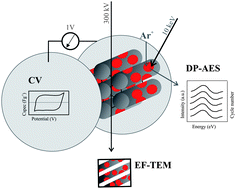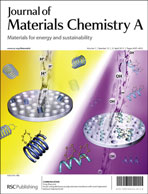Functionalised porous nanocomposites: a multidisciplinary approach to investigate designed structures for supercapacitor applications†
Abstract
The rational design of nanocomposite structures with specific functions in energy storage applications is a key requisite to increase energy and power density in electrical storage systems. Nanoscale characterisation tools are essential to achieve controlled syntheses of such well-defined interface structures in order to reveal structure–property relationships in functional nanocomposites. In the following, we report on the synthesis of iron (hydr)oxide


 Please wait while we load your content...
Please wait while we load your content...